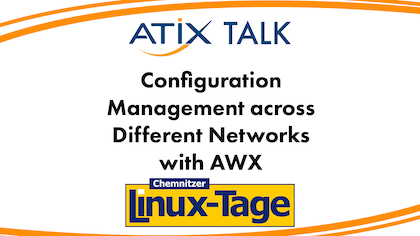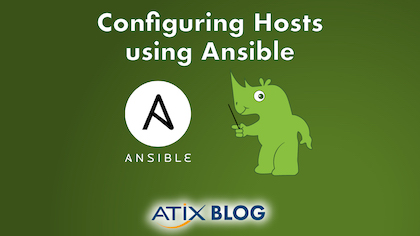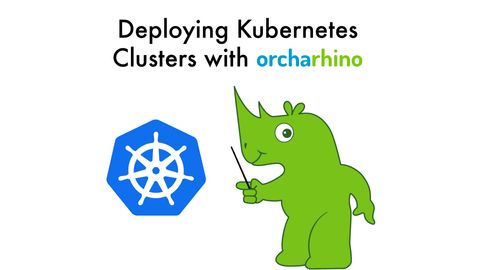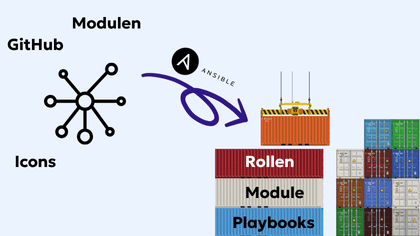Tag Archive for: Infrastructure Automation

Automating Kafka with Ansible
In all areas of life, there are a lot of issues we are not aware of. To measure these problems, we use the so-called fulfillment rate. For example: with a fulfillment rate of 90%, a heart beat would stop every 85 seconds, and an average A4 page of text would contain 30 typos. A fulfillment rate of 99.9% (which seems a lot) still means 22,000 wrong bank bookings per hour, and a total of 32,000 missed heart beats per year. The answer is automation and standardization! These approaches help solve problems we are often not aware of.

Configuration Management across Different Networks with AWX
At the Chemnitz Linux Days 2023, Ottavia Balducci, IT Consultant at ATIX, presented the advantages of AWX. AWX is a tool that can be used to configure hosts with Ansible. It is therefore particularly popular with larger organizations. AWX is open source, fully customisable, has a web UI, REST API, RBAC, CI/CD ... There are many reasons for working with AWX.

Configuring Hosts using Ansible
You can use Ansible to configure managed hosts within orcharhino. For our up-to-date documentation, see Configuring Hosts using Ansible.
Ansible is an automation engine and configuration management tool. It works without client and daemon and solely relies on Python and SSH. Ansible consists of a control node, for example a notebook, a workstation, or a server and managed nodes, that is the hosts in its inventory. You can use Ansible to configure hosts similar to Puppet and Salt.

AWX and GitLab Webhooks
Tools like AWX and Ansible Automation Platform have become essential in large organizations to manage a large amount of Ansible projects. They provide the ability to pull Ansible code from multiple sources, schedule jobs, distribute credentials and permissions for different users in the organization, and a lot more. We recommend managing Ansible code in a version control system, specifically Git. There are several platforms for functions beyond mere version control. In this article, GitLab plays a central role.

Ansible Best Practices
Ansible is a tool that automates configuration management through code written in YAML. It is extremely popular, partly thanks to the fact that it works without clients and daemons: all it needs is Python and an SSH connection!

Deploying a Kubernetes Cluster with orcharhino
This blog post is about an orcharhino feature called application-centric deployment (ACD), and describes the process of deploying a Kubernetes cluster with orcharhino. It allows administrators to create hosts based on application templates, and makes it easier to run multiple instances/versions of a complex application.

Automated Windows Patches with Ansible
As a specialist for Linux patch management, we are often asked whether we are also familiar with Windows patch management and whether we can provide an automated solution for this. The answer is pretty simple, YES we can. We have already built and implemented fully automated Windows patch management with Ansible for several customers.

orcharhino and Sophos – a malware trail search
The use of anti-virus and security software is a prerequisite in most infrastructure scenarios. This makes it all the more important to adapt them to the respective usage scenario. orcharhino as the central hub in the computing cluster is of particular importance.

The Future of Ansible
The introduction of Collections is not the only recent major innovation in Ansible. Until version 2.8, Ansible was offered as one large package. This included a variety of modules developed and maintained by the Ansible community. The introduction of Collections happened as part of the release of version 2.9: a format for easy packaging and distribution of Ansible content. Collections significantly improved the possibilities for extensions as well as maintenance. The current major version is Ansible 3.0.0. ansible-base is not installed with it, but has become a dependency.

Ansible Collections – More clarity and easier sharing in Ansible
Ansible is the fastest-growing configuration management tool these days. This has also created a steadily growing community. Due to the simple architecture and the resulting easy extensibility, more and more companies and private persons provide their roles, modules and playbooks for their products and projects.


